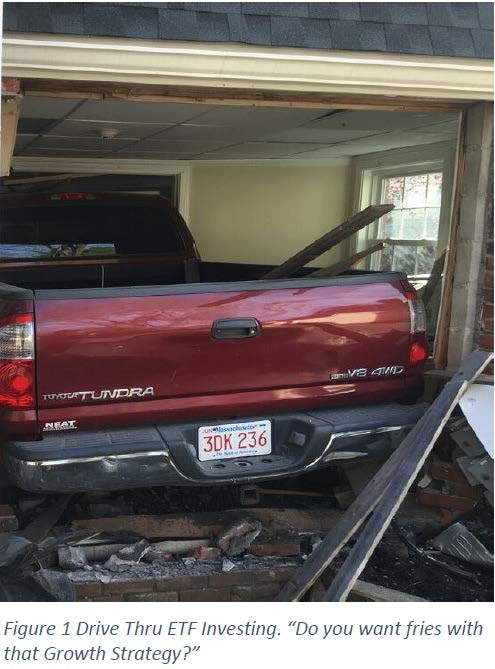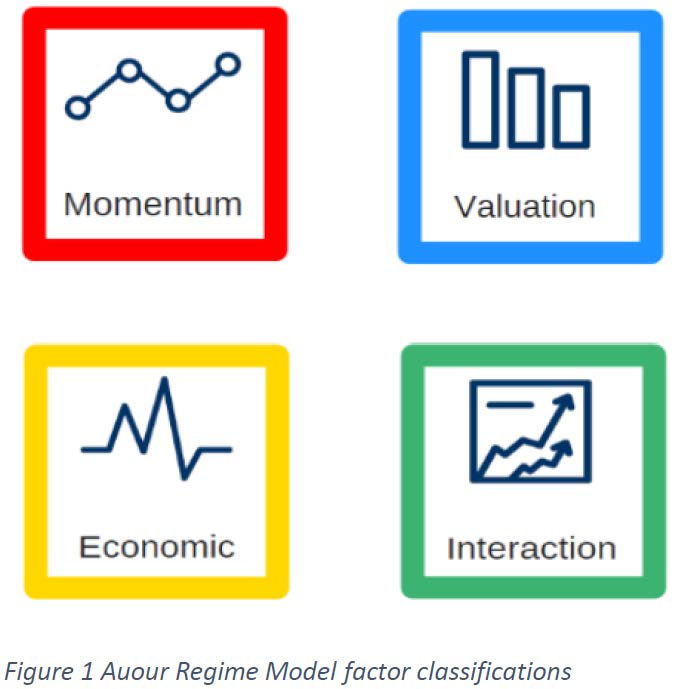The lesson this month is that investment timing is important. Not just a little, but a lot. But let’s first start with an analogy. This past week a Toyota Tundra pickup barreled into our office space during work hours, laying waste to all contents. Thankfully, no employees were in the office at the time as we were all traveling on business. The driver also escaped without harm.
Of course, our first thoughts were thankfulness that no one was harmed. After that, it went to taking inventory of all that was lost. And then lastly, it went to writing about it as an analogy to investing as there are always lessons to be learned.
A truck going over 40 mph through a lawn, a driveway, three fences, a parking lot, and then straight into a brick wall is a one in a million event. Not predictable they say. But is that correct? So many call these accidents unpredictable because we have become accustomed to not reading the right data or having the right toolset available to adjust. If the driver was in an intelligent car with crash protection software, it would not have gotten to the point of destruction. A car with such a feature monitors its surroundings to look for actions that may lead to an accident and can proactively adjust to thwart bad outcomes.


The same can be said for investing. Many prognosticate that market timing cannot be accomplished, that riding severe market downturns with a static allocation is the right way. That reasoning comes from one perspective. A perspective limited by the emotional responses of past events. Change your viewpoint and you can reach a different opinion.
Our research suggests that there are combinations of events that should make one be proactive and limit one’s exposure to the markets. When these combinations present themselves, the likelihood of a material downturn dramatically increases, or using the analogy above, the vehicle has crossed the yellow line.
Data driven models, when built correctly, have the capability to detect changes in the risk position of the market and make adjustments. Staying with the analogy, there are many factors that need to be monitored before you override the operator.
 From our research and experiences, one factor is not enough. With such a complex system, you do not want to fall victim to hubris and become overconfident in your readings. We rely on a multi-factor model that relies on a wide span of data to determine the riskiness of investing.
From our research and experiences, one factor is not enough. With such a complex system, you do not want to fall victim to hubris and become overconfident in your readings. We rely on a multi-factor model that relies on a wide span of data to determine the riskiness of investing.
We have built our risk measurement systems around nine super factors where each super factor is based on fundamental reasoning and backed with strong empirical evidence that each has predictive power at knowing when an accident is increasingly likely.
We group those nine factors into four categories: momentum, valuation, economic, and interaction, with each, adding a different viewpoint. That blending of perspectives generates a greater confidence by us that our readings are durable throughout the investment cycle. As an example, while some will look at momentum and sell if it turns negative, we have the opportunity to view that signal differently if valuation is attractive, economic signals suggest health, and liquidity is re-entering the market. That is what happened in late February that resulted in us putting client cash back into the market.
Similar to the engineering effort that backs the collision avoidance software in the next generation of automobiles, we believe we offer the same for intelligent investing. Market timing has proven elusive for some as they attempt to either micromanage the present by regressing the past or limit their focus to only one view. This leads to over confidence and mistiming. We take a different course with a multidisciplinary approach and build portfolios that can navigate the market terrain and, hopefully, avoid those times of detrimental outcomes.
*Note that downside protection is not just pervasive in our investment strategies. We have built it into our firm. No material loss of material or time has prevented us from continuing our duty to be stewards of your capital. Our disaster recovery practices went into effect immediately and effectively.
